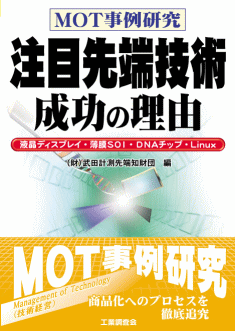| HOME |
|
 |
CONTENTS : >>> Back to Introduction Chapter 1. Development of Liquid Crystal Displays Chapter 2. Development of Silicon on Insulators Chapter 3. Development of DNA Chips Chapter 4. Research on Linux Innovation
|
| Abstract DNA chips are very small glass or silicon supports with hundreds of thousands of different oligonucletides or cDNA on their surface. Since simultaneous analysis of sequences and functions of large numbers of genes is possible with DNA chips, they are used to detect small differences in genes between individuals and to study patterns of gene expression under different conditions. DNA chip technology was born and reared within a drug discovery venture, Affymax, that was developing technologies based on the concepts of combinatorial synthesis, in vitro high through-put screening, and miniaturization. The idea of synthesizing biopolymers such as peptides and DNAs on a solid support using photolithography was proposed by the company's COO, Leighton Read. The idea to create a novel drug discovery technology was developed by the newly employee Stephen Foder; however the established technology was not a drug discovery technology, but rather DNA chips with many different kinds of DNAs loaded on their surface. Since DNA chips can detect DNAs in a sample solution, they were explored as a new analytical tool for gene analysys. Thus, gene analysis venture Affymetrix span out from Affymax. Foder and his co-workers developed a DNA chip analytical system with scanner and computer software that can analyze hybridization experiments, and various usages of the system were explored in an academic network developed by the founder, Alex Zaffaroni. In the meantime, Pat Brown of Stanford University reported a new method for gene expression analysys using spotting type DNA chips, and showed their indispensable utility. Also, as the international effort to sequence the human genome and selected model organisms was accelerated by the establishment of a private gene sequencing company, Celera, and more and more genes with unknown functions were identified, it become cleare that new and much larger scale analytical methods were neccessary. This situation led to the wide utilization of DNA chips for gene analysis. Affymetrix's DNA chip technology is the product of a combinational approch consisting of the proposal of a novel idea by Read, the creation and maintenance of an open and reactive environment by Zaffaroni, the zealous pursuit of novel technology by Fodor, ample investment, and a broad human network in academia developed by Zaffaroni.
|